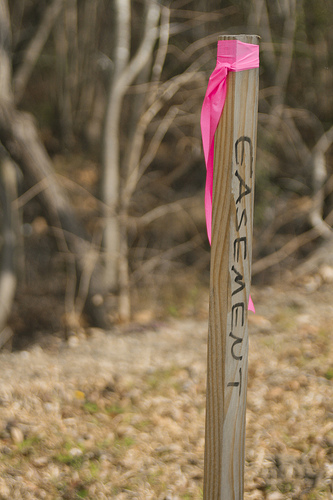An easement is the right of an owner of property (the “dominant tenement”) to use the property of another (the subservient tenement”) for a specified type and extent of use. Most common are roadway easements, to allow the owner of the dominant tenement (the easement holder) access to their own property. If the easement is by grant, as in a deed, hopefully the language clearly spells out the use, otherwise it has to be determined based historical use of the easement. For a properly drafted easement, it would be best to consult with an experienced Sacramento real estate attorney. Additionally, the owner subject to the easement has an obligation not to interfere with its use. Usually, this occurs when a roadway falls into disrepair, some obstruction is placed in the way, or a gate is installed. In a recent decision in So. California, the easement was clearly spelled out, but interfering owner refused to allow the easement holder to improve the road so she could get a building permit, and this was found to be obstruction of the easement.
 In Flora Dolnikov v. Dikran Ekizian, the easement was located in the Hollywood Hills above Laurel Canyon Road. (Google map) The plaintiff Flora had a easement for access to her property (“ingress and egress”) Both parcels were undeveloped; Plaintiff’s lot was uphill from the defendant’s. Flora obtained building permits for two houses on her property. The slope of the easement was too steep and the right of way had fallen into disrepair so that all that remained of the original pavement was substantially covered with dirt and rocks from uphill. The easement was unsuitable for access. The County approved Flora’s grading plan which would lower the soil level 6-8 feet, and build a retaining wall. The defendant complained about the construction, and the County required that the defendant sign off on a community driveway covenant. Defendant refused, first demanding $100,00, then $200,000. This lawsuit was filed.
In Flora Dolnikov v. Dikran Ekizian, the easement was located in the Hollywood Hills above Laurel Canyon Road. (Google map) The plaintiff Flora had a easement for access to her property (“ingress and egress”) Both parcels were undeveloped; Plaintiff’s lot was uphill from the defendant’s. Flora obtained building permits for two houses on her property. The slope of the easement was too steep and the right of way had fallen into disrepair so that all that remained of the original pavement was substantially covered with dirt and rocks from uphill. The easement was unsuitable for access. The County approved Flora’s grading plan which would lower the soil level 6-8 feet, and build a retaining wall. The defendant complained about the construction, and the County required that the defendant sign off on a community driveway covenant. Defendant refused, first demanding $100,00, then $200,000. This lawsuit was filed.
The trial court found after bench trial they the grading and wall were necessary for the use of the easement for its expressly intended purpose by plaintiff, the owner of the dominant tenement, and that their presence was not in any sense inconsistent with the nature of the easement and were authorized by the easement. Thus, they were a “necessary incident” of the easement. Despite this court order, defendant refused to sign off on the county permit.
 Subsequently a jury trial was held. The jury found that defendants substantially and unreasonably interfered with plaintiff’s use and enjoyment of her easement by acting or failing to act, and next that defendants breached the implied covenant of good faith and fair dealing contained in the easement’s running covenant.
Subsequently a jury trial was held. The jury found that defendants substantially and unreasonably interfered with plaintiff’s use and enjoyment of her easement by acting or failing to act, and next that defendants breached the implied covenant of good faith and fair dealing contained in the easement’s running covenant.
The Court noted the law regarding easements. The grant of an easement must “be interpreted liberally in favor of the grantee.” When an easement is based on a grant, as it is here, the grant gives the easement holder both “those interests expressed in the grant and those necessarily incident thereto. Every easement includes what are termed `secondary easements;’ that is, the right to do such things as are necessary for the full enjoyment of the easement itself.” The servient owner may not use his property in a way that unreasonably impedes the dominant tenant in his rights.
The court found that, as the grading and retaining wall are necessary incidents of the easement for ingress and egress, they are secondary easements, and so Flora was entitled to do the work in furtherance of full enjoyment of her easement. Defendant’s refusal to sign was unreasonable interference with the easement, rendering it utterly useless.
Easements are important as well as troublesome. In addition to obtaining one by grant, easements can also be created by prescription, or necessity. A buyer of property should fully understand the easements involved before closing the deal, or may be unpleasantly surprised.
photos:
http://www.flickr.com/photos/inneedofhelp08/3287555971/sizes/m/in/photostream/
http://www.flickr.com/photos/heritagevancouver/10780658825/sizes/n/in/photostream/
 California Real Estate Lawyers Blog
California Real Estate Lawyers Blog

